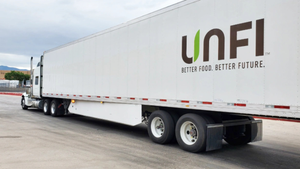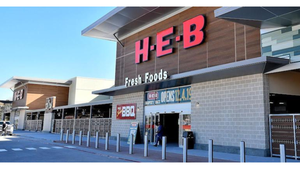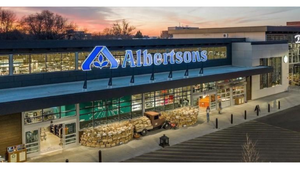What's the Best Alternative?
Refrigeration roundtable panelists say newer systems are worth a look.
April 18, 2011
Terry McIver
Editor’s Note: This story originally appeared in slightly different form in Contracting Business.com, a sister publication to SN within Penton Media.
Alternative refrigeration systems were among the topics discussed at the Contracting Business.com and Supermarket News Refrigeration Roundtable, which was held during HVAC Comfortech/HVACR Week in September 2010. These include secondary loop systems, distributed systems, cascade systems that use carbon dioxide (CO2) and compact chiller modules. Our panel of refrigeration contractors and supermarket executives shared their experiences with some of these systems, as part of our four-part series of Refrigeration Roundtable articles.
Newest Systems Require Technician 'Buy-In'
These newer refrigeration systems provided executives from Price Chopper, Farm Fresh, Weis Markets, Giant Eagle, and Hannaford Bros. and our panel of contractors with some interesting observations during the Refrigeration Roundtable discussions.
Benny Smith, vice president of facilities for Price Chopper, told of Price Chopper’s experience with cascade CO2 systems installed in more than one location. Cascade systems consist of two independent refrigeration systems that share a common cascade heat exchanger.
“One was installed at our store in Saratoga, N.Y. It operates at higher pressure — about 4,000 PSIG (pound-force per square inch gauge). The nice thing about CO2 on the condensing side is that it holds pretty steady on the internal pressure of the discharge.”
Smith said technician involvement in the initial construction is a key to successful CO2 cascade or CO2 secondary loop system changeover. In secondary loop systems, two liquids are used; a primary refrigerant and a secondary fluid.
“It wouldn’t have been good if we just turned the store over to a technician and said, ‘Go in there after start-up, and learn it.’ We had him involved in the whole startup process. We invested the time, not only in that store, but also the second store. He’s taken ownership.”
Technician empowerment can be a spark to individual initiative. Smith added that the technician charged with managing the Saratoga store devised a kit and manifold set to charge the oil into a high-pressure CO2 system.
“It can become very creative when they take ownership, and make the system operate successfully,” Smith said.
The Saratoga Price Chopper store also uses secondary coolant, and one existing compressor room uses HFC refrigerant in one area. Additionally, Smith said these projects must be built according to the American Society of Mechanical Engineers (ASME) safety code, and meet all relevant requirements of New York state.
One Step at a Time
Smith is encouraged by the performance of these new systems, but said only time will tell how well CO2 performs in the long run. Its lower cost is a key benefit.
“The CO2 system’s only been around for a couple of years, whereas direct expansion’s been around many years. So, I’m not sure that the jury’s done on CO2 systems. It’s hard for me to say where we’re going with it until we get three to five years under our belt. At the end of the day, our job is to keep our stores’ refrigeration running, and keep the products cold,” he says.
Second Nature System
Another store in the Price Chopper chain, in Colonie, N.Y., has been using the Hill Phoenix Second Nature System since May 2009. It employs CO2 as the secondary fluid for the low temperature cases, and glycol as the secondary fluid for the medium temperature cases.
“We went from a subcritical cascade system to two secondary systems,” Smith explained. “It was very complicated, but again, we had the technician present during the installation. John Gallaher and his Hill Phoenix team provided excellent classroom training.”
Gallaher, director of marketing and business development for the Hill Phoenix refrigeration systems division, explained the reasoning behind the system that was chosen.
“One of the challenges Benny brought to us and other OEMs on the Colonie, N.Y., project was that he wanted a system that would keep Price Chopper outside of any EPA recordkeeping requirements. The EPA may eventually extend those HCFC requirement to HFCs. That system in Colonie was designed so that every individual charge in that system is below 50 pounds, so it falls under the radar,” Gallaher said.
Dan Steffen, vice president, AAA Refrigeration Services, Bronx, N.Y. – the ContractingBusiness.com Commercial Refrigeration Contractor of the Year — agreed that the Hill Phoenix training is exceptional.
“We visited the Price Chopper store, to see their CO2 systems. Customers were asking about it. Since then, we’ve met Rusty Walker, who runs the Hill Phoenix CO2 division. We brought a bunch of customers whose systems we service in that region, and some of our technicians, for a training session.
“It was priceless,” Steffen said. “The training and backup they have are very worthwhile from our perspective as a contractor.”
Steffen said AAA recently installed a distributed system at two stores. One drawback he found is in diagnosing problems. “Instead of going to one motor room to diagnose a problem, we’ve got to look in four different locations, depending on the store. But as much as we can provide input, the customer’s making the decision. We support whatever the direction the customer follows,” he said.
Two Giant Eagle stores have been operating on secondary glycol and secondary CO2 systems, says Jim Galehan, refrigeration and HVAC manager for the Pittsburgh-based chain of stores. The results are promising.
“We’re seeing lower maintenance costs associated with the glycol system, Galehan said. “We’ve been able to achieve a smoother rack operation, which helps reduce compressor cycling, which helps with control of the suction and discharge pressures. As things move forward, I think we’ll see HFCs become regulated more closely as well and that will drive change once again. We’re evaluating the secondary CO2 systems we have in place. We don’t have any more planned until we gather more data.”
Seeking Freedom From HFCs
Jon Perry, director of energy and maintenance, Farm Fresh, Virginia Beach, said supermarket managers as an industry group are uncomfortable with the uncertain future of HFC refrigerants. Will they ever be totally eliminated? If so, when might that happen? He addressed these questions to some chemical formulators at the last FMI Energy Conference.
“We like to know if there’s something cost-effective out there that works, and we don’t want to just keep changing machine houses every seven years, or whatever the timetable might be. It was interesting to hear them say that HFCs aren’t anywhere close to being taken out of the picture. They’re talking about phasing them down, but not eliminating them,” Perry said. “I like that leaders in the industry, such as Price Chopper, are stepping up and saying, ‘We’re not going to wait around and be at the mercy of HFCs the rest of our life.’”
Perry added that the refrigeration industry needs to tell it’s story better.
“The whole industry is a very efficient distribution network, and it really should be thought of as a problem solver for saving energy, not a problem,” Perry said. “The supermarket industry uses the most efficient food distribution methods in the world, and has made it possible to feed the world cost-effectively.”
Perry said he foresees a time when systems will have leak rates of a mere 1% to 2%. Nowadays, conventional refrigeration systems are given a 25% average annual leak rate cushion by EPA.
“Are they going to use CO2 or HFC? I don’t know,” Perry said, “but I’m spending my energy on knowing how to make a system that doesn’t leak. If I know how to stop refrigerant leaks, I know how to stop CO2 or glycol leaks.”
Support for DX System
In a direct expansion (DX) system, compressors are mounted together and share suction and discharge refrigeration lines that run throughout the store, feeding refrigerant to display cases.
Perry said he found the direct expansion system to be the most efficient refrigeration system he’s seen. “I have nothing to substantiate that on, but I believe it’s the best for the environment, long term,” Perry said.
Glycol Medium-Temp a Winner
Refrigeration contractor Stan Shumbo, president, Eastern Refrigeration, Colchester, Conn., reported good results in working with medium-temperature glycol systems, and was just completing Eastern’s first Hill Phoenix Cascade system installation.
“It’s a learning curve for all of us. I think, like Benny said, the jury’s still out.”
Shumbo then described work on a DX system that uses fuel cell power.
“We used the chilled water from the fuel cell to run through a water tower to chill it for our low-temp cases. It keeps the refrigerant charges down to a minimal level. Hill Phoenix built the pump package for us, which incorporated the pumps for the glycol and the medium temp, and the pumps for the chilled water.”
It was, Shumbo said, quite an eye-opener for his technicians.
“Most of the techs take a look at it and at first, they’re totally overwhelmed. So yes, there’s a learning curve.”
Contractor Ron Smith, president, DHR Mechanical Services, Woodstock, Ga., has installed a small number of secondary refrigeration systems in the Southeast, for test stores.
“However, we see an increase in distributed systems here,” he shared. “One of our largest accounts out of Arkansas is testing several in the Southeast. Distributed systems seem to be a safe and happy medium for refrigerant reduction without going fully to secondary or alternative refrigerants.” Distributed systems use multiple smaller units that are located close to the display cases.
Charles Dinsmore, director, engineering/store service, Weis Markets, Sunbury, Pa., said three Weis stores will be outfitted soon with distributed systems, as part experiment/part good business.
“We wanted to see what we could do with the refrigerant charge,” he said. “It seems to be a good, cost-effective alternative to some of the higher-priced things, like CO2 secondary systems. It looks like a good balance of energy use, installed cost, and equipment cost.”
Ron Smith said distributed systems use technology that’s familiar to most good refrigeration technicians. However, he and his team are pushing the technology envelope.
“We’re about to bid a new store for one of our largest Southeast grocers that heavily promote green technology. They’ve chosen to use secondary refrigerant as their means of refrigeration. They’ve committed to this, as they believe it’s right for their company and their customer’s image of them,” Smith said.
“Over the next few years we’ll determine which system suits the customer best, as they all try to reduce refrigerant charges and be more environmentally responsible.
“In my opinion, currently there’s no best answer, only that the move away from current refrigerants is as necessary as our need to move away from fossil fuels. Anything we do in this direction is good and the best will rise up over the next few years.”
You May Also Like




